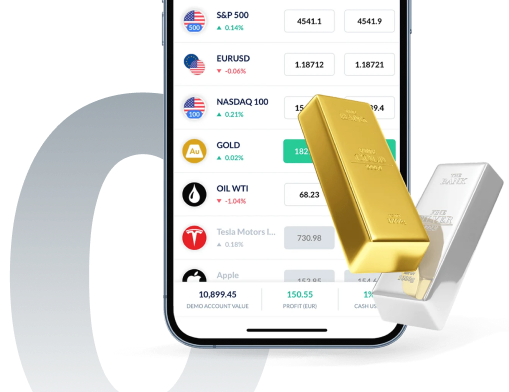Elliott Waves: phases and rules

Elliott Waves indicator: why do traders use it?
The Elliott Waves indicator, a powerful trading tool in the arsenal of traders, has captivated the financial world for decades with its ability to decipher market sentiment and forecast price movements. Traders use it for its potential to identify opportunities amidst the chaos of financial markets.
For instance, during the 2008 financial crisis, many Elliott Wave analysts correctly predicted the market's downward spiral, guiding some investors and traders to safety. However, opinions on the indicator are mixed. Advocates laud its ability to provide structure in unpredictable markets, while critics argue it's overly subjective and unreliable. Despite this, its popularity endures, with countless traders worldwide incorporating Elliott Waves into their strategies, making it a noteworthy indicator in the world of trading.
What is Elliot Waves?
Elliott Waves are a popular form of technical analysis which were developed by Ralph Nelson Elliott in the 1930’s. Elliott had observed that markets tend to move in recognisable patterns (like all technical analysis!) and these were created by recurring investor behaviour - which he termed behaviours based on either ‘fear’ or ‘enthusiasm’. An Elliott Wave has two basic phases known as the:
- impulse or motive phase
Or the: - reactionary or corrective phase
Whilst this may seem complicated at first, these types of phases are easier to understand and we'll dive into them much further below:
Trade Demo: Real trading conditions with zero risk
Trade risk-free on Skilling’s award winning platforms with a 10k* demo account.

In summary though Elliott described the impulse phase as always moving in the direction of the trend, whereas the corrective phase always moves against it. What this means is that, in a bull market, the impulse phase will be moving upwards while the corrective phase will be moving downward. Conversely, in a bearish market the impulse phase will move downward and the corrective phase will move upward. When you look at long term charts you can indeed see that these types of phases can be observed - check out virtually any instrument or market and you will see that is rarely a straight line either up or down.

Moving on, the author then describes that to complete an Elliott Wave sequence you need eight waves which consist of five waves in the impulse phase (1, 2, 3, 4 and 5) and three waves in the corrective phase (A, B and C). The impulsive phase waves 1, 3 and 5 move in the direction of the trend, while waves 2 and 4 are corrective and move against the trend. Within the corrective phase, waves A and C move against the trend and are corrective, and B is an impulse wave. Below are examples of the sequences and phases discussed for further understanding.

Finally, Elliott stipulated that there are certain rules that must be applied to confirm his idea of an Elliott setup. These are:
- Wave 3 cannot be the shortest wave This rule means that Wave 3 is always longer than at least one of the other two waves (Waves 1 or 2). Usually, Wave 3 is longer than both these waves.
- Wave 4 cannot overlap the price ‘territory’ of Wave 1. This means the end of Wave 4 should not trade below the peak of Wave 1.
The impulse and corrective phases alternate in a cyclical manner, forming larger degree waves and cycles.
Why is it important to traders?
The Elliott Waves indicator is important to traders for several reasons:
- Trend identification: The Elliott Waves indicator helps traders identify and analyse market trends. By visually representing wave patterns, it allows traders to determine whether the market is in an uptrend, downtrend, or corrective phase. This information is crucial when making trading decisions.
- Entry and exit points: The indicator assists traders in identifying potential entry and exit points within the market. By recognising specific wave patterns, such as impulse waves or corrective waves, traders could align their trades with the prevailing trend and optimise their timing for buying or selling assets.
- Risk management: Understanding Elliott Wave patterns helps traders set appropriate stop-loss levels and profit targets. The indicator provides insights into potential price reversals and the extent of corrective movements, allowing traders to manage risk more effectively and protect their capital.
- Confirmation of analysis: The Elliott Waves indicator acts as a tool to confirm or validate other technical analysis tools and indicators. When the signals from the indicator align with other technical factors, traders gain additional confidence in their trading decisions.
Skilling Summary
Elliott Waves are a famous setup and well known within trading. Many experienced traders use them over longer time frames to help them visualise the market from a top-down perspective. As you learn more about trading you will see that many of the ideas that Elliott outlined are indeed correct (for example, downtrends occurring within an overall uptrend). We believe that whilst Elliott waves are an advanced form of technical analysis to learn, the approach holds many important techniques that can help you in the long run. Once you have mastered the number of waves and phases that he describes Elliott Waves should be more easy to spot.
Are you looking to make the most out of your trading?
Our trading apps are designed to make your trading easier, faster and more efficient.

Not investment advice. Past performance does not guarantee or predict future performance.










